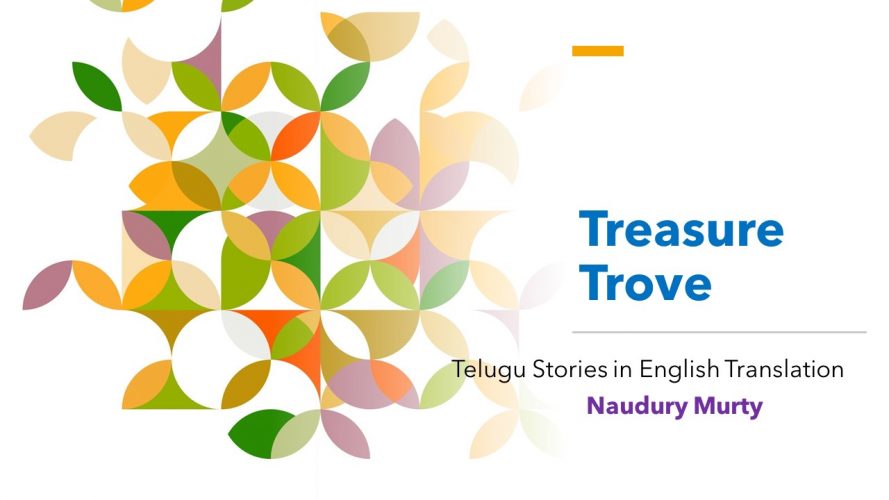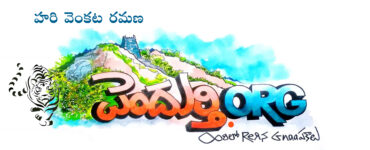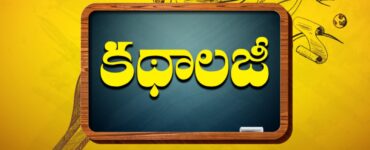Telugu: Chaso
[There are many short stories of Chaso which were often quoted and well critiqued. But strangely, this story missed the attention of readers and critics alike. (With the exception of Dr. Dwaram Durgaprasada Rao.) Compared with Chalam’s “O Puvvu Poosindi (A Flower Blossomed)” for its lyrical beauty and epical narrative, the current short story also highlights an important requisite for any aspiring writer: familiarity with nature, the flora, fauna, and the habits and habitats of aviary, particularly when they deal with subjects or when they describe things as part of creating a setting for their story. I am afraid that the familiarity of generations of writers on this subject is poor. It makes an interesting reading if someone delves deep into this subject as a research topic. But even the more interesting part of the story is what was left unsaid.]
*
A male black Drongo flew towards the sesamum fields abutting a stream. They were in bloom with the bell-shaped white flowers tossing like silver bells in the wind. The Drongo chased a butterfly fluttering over the flowers. The flight of the butterfly would put to shame the vacillant looks of women; but the black Drongo’s was but the flights of imagination of a poet.
A butterfly would be at its ingenuous best when it comes to fleeing away from its predator. It charged towards the crown of the Drongo first, changed its course to the back of its tail; then, darted into the open field in the neighborhood abruptly reversing its course with such daredevilry as to dive into the field right across the Drongo’s beak, missing it by a whisker, before dissolving into the thick green foliage without trace. Even under the most lethal circumstances, the morale of the butterfly remains so high that puts the Sikh sepoys to shame. Poor Drongo! Despite his swifter-than-lightning limbs, and expert aerobatics in the field, he had to embrace defeat. The chasing of the butterfly in the gentle wind over the gingelly fields by the Drongo, and its great escape at the last minute were nothing short of an enthralling adventurous movie playing before one’s eyes.
This time, the Drongo waited perching on a bare stalk of red gram for the prowl. He swiftly caught a firefly of peacock-plume-colored wings, besotted with the fresh nectar sucked up from the sesamum flowers. He swallowed the sapodilla-like meat of the insect. The rainbow-hued wings of the victim drifted in the wind gently. Noticing the spectacle, he warbled in delight.
There were hosts of weevils, roaches, cicadas, carpenter bees, beetles and grubs, bumblebees on the sesame crop and an occasional flock of butterflies. As for the mealybugs, mantises, and scorpion flies which roamed freely from plant to plant, they were just uncountable. There was an abundance of food for the Drongo to feast his belly without any effort.
But soon he lost interest in his song and the game. Burning with desire, he flew high onto the mountain slopes and reached for his mate.
In the bamboo valley nestling in the mountain range, there was an eons-old mango grove where trees had grown toweringly large and with almost cave-like cavities. Under its shade there was a listless growth of wild shrubs of Bengal Currant and Canthium. Amidst this setting, there was an old abandoned well, with plants with thick wooden bumps shooting off from its dilapidated walls. An old moringa in full bloom, but infested with caterpillars, was standing by. Close to it there was a babul, and on one of its sturdy forks of the outer reaches, a female Drongo was building a nest that resembled a fascinator— a straw-hat worn by European ladies. With the felt and feathers it gleaned along with Calotropis cotton, it was setting up a warm carpet for the eggs it was about to lay.
The female Drongo loathed the overtures of the male and flew away to collect some more feathers. The male followed suit. He tried to bring his mate to his way by staying close to her. He preened, drooling, her wings and picked mites off her crest. But, for the female Drongo, conjugal fidelity took back seat before her motherly virtue. She kicked him and warned him to keep off. She flew off back to its nest. The male Drongo picked up few feathers before following her trail.
The landscape was wild with the yellow inflorescence of Senna and the white clusters of Dyer’s Oleander in full bloom. The early inflorescence of Bengal Currant was turning to fruition after pollination. Sweet scents emanating from the young flowerets pervaded the surroundings.
The building of the nest was completed.
Then, the female passerine turned her attention to her mate making a call. She played with him locking in her beak and wings and they ‘tee-hee’d together and flew in search of food. She trilled and quavered and, with accord, gleaned worms, termites, and insects from the bumps of an old, hollow mango trunk. They relished their meal, sharing between them the mantises and grasshoppers on the hogweed and the hornets on the melochia.
Stealing a brawn of meat from the marketplace, a speckled kite hovered into the dale. And a murder of crows chased it pecking at the meat clutched between his talons. With nothing else to do and to have some fun, the Drongos joined the crows. At teasing a kite, a Drongo is more adept than a crow. The two reached under the tail of the kite and started pecking at his feet with their knife-sharp beaks. As the kite lost its hold on the meat locked up between its crab-like claws, the piece of meat dropped into the black-soiled fields below.
Just for a piece of almond-sized meat, twenty-five crows brawled for their share. If they had really wanted it, was meat a scarce thing for them? But that was a prized possession, won over after a long fight with the kite. The Drongos watched the fun and made a song and dance about it. Their song was the song of a highland rill. Prancing and dipping in the rocky, uneven landscape, it was the song of a mountain stream. Even if it had angered the kite for dispossession of its meat, what harm could that poor creature do to the Drongos?
The lady Drongo called it a day for their fun and frolic with that. She flew back to her nest. On the smooth cushion she made of blue feathers of the Indian roller and the variegated plumage of other fowl blended with cotton, she laid a clutch of three shiny creamy eggs and sat brooding over, warming them up under her dark belly.
Sun was getting down. And the flock of birds gleaning grain on the fields suddenly took off into the bamboo forest. The mynas flying by the palmyra groves rang the alarm bells about the approaching hawk. And soon, like the spinning wheel of lord Vishnu, a hawk scooped on a pigeon and lifted it off to a far-off cliff.
Silence fell over the valley. All chirping and trilling had suddenly ceased. Darkness enveloped from all corners. And the Jacobin cuckoo chanted praises of lord Indra. Accompanied by rumbling and cracking thunderbolts, dark clouds overwhelmed the skies. But, like the demon Trunavarta, who vortexed child Krishna into the skies in a whirlwind, a sudden blast of air scattered and drove away the clouds in all directions.
A branch of moringa broke and fell on the nest. Scared of their lives, the Drongos flew out of the nest. Calling for each other in the dark for a long time, they met on a broken moringa branch. They were worried about their eggs. All the birds were roosting in their respective places silently. With a violent frenzied laughter, a bird was engaged in jocose conversation with its mate somewhere. Chewing the Peepal leaves, the Indian fruit-bats shuffled restlessly. All through the night, mother Drongo was agonized about its nest and the fate of her offspring. And all through the night, father Drongo tried to console her.
The nest she was looking for was seen careening under the moringa branch that fell over the babul branch. One egg, caught up in havoc, broke and the yolk had slowly dripped off. Ants gathered around and were making a feast of it. Poor birds! The fruit of their love, the soul of their lives, a blessing of the nature for the year… had become a meat to lesser creatures. They could not trace out the other two eggs. They suddenly saw a gray colored animal crawling under the bush. Wagging its foxtail, a mongoose was stretching its gibbous mouth to reach out to something. Watching the mongoose, a scared gecko hurried off the foliage. And the water cock scurried off hunching through the bushes. The mongoose reached for an egg and started relishing the albumen of the egg like the cream of a palm fruit.
The two Drongos fought with the mongoose like two scissors of steel. And the mongoose hissed like a snake and snatched one of the wings of the male Drongo with lightning speed and then clasped its neck between its teeth. It was a lucky day for the mongoose. When it only went for an egg, it was rewarded with the bird! For the creature fed up eating snakes, bird’s meat was a bestowal. The female Drongo went into a fit of anger and with desperation kicked and creased the mouth of the mongoose with its sharp claws. The mongoose did not care a whit and, instead, pressed its catch with its teeth too hard. Making a final heart-rending shriek, the male Drongo gave up life. Into the heart of the mountain valley, agog with the piping of the birds, the male Drongo’s final shriek pierced like a dagger. The mongoose quickly ran into its hiding.
An anthill assiduously built by ants, the subterranean palace a snake had accroached from them, the terracotta forte the mongoose annexed from the snake by killing it… had become the vault for the mortal remains of the male Drongo.
Made companionless and alone, the female Drongo grieved making rounds about the earthen tomb. Failing to empathize with her and assuming himself for another creator of muse, man went lyrical about it.
Despite getting downhearted and heavy with grief, the female Drongo collected herself to set right its nest. It laid another egg and brooding over it, she forgot her misfortune. What is the loss of her mate before her maternal virtue?
The chick broke through the shell. The summer got warmer. The mother Drongo sheltered the unfledged mass under its wings for the whole day. And at nightfall, made sorties to feed her chick and glean worms for herself.
What is there to life? Once the chick gets fledged, it shall take wing and the female Drongo shall be alone. And soon it will be spring again.
The Drongo chick fledged. The covetous chick she so ardently fledged, turned out to be a male Drongo.
Time rolled on. And the wild jasmine was back abloom, and the male bees started dating the flowers again. As the milkweed pods blew and the fluffy cotton canopied the air, the seeds started floating like balloons. Turning up new leaves on the teak woods, Lord Vasanta had unfurled his flag of verdure and blew his conch of silence.
The female Drongo flew into the fields with the young male. She picked up halvah-like caterpillars, and hot, hot weevil. The juvenile Drongo raised his voice and ‘tee-hee’d for the first time — marking coming of age. Melody resonated in his voice. The female Drongo had successfully acquitted her motherly virtue. Heart overwhelmed by a feeling of fulfilment.
*
[First appeared: “Matrudharmam” — Rupavani, 1946]








Add comment